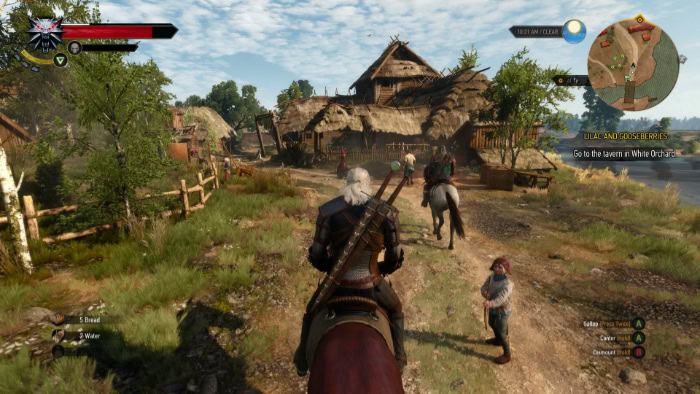How Many Games Can 1TB Hold? Is It Actually Enough?

A standard 1TB drive typically holds between 10 and 20 massive AAA blockbusters or hundreds of smaller indie titles. While the raw numbers are straightforward, the reason you are asking is likely to validate a purchase decision for a new PS5 or gaming PC.
You need to know if that drive will actually hold your specific library or if you will face constant uninstall warnings. The answer depends entirely on the specific games you play and the hidden constraints of your hardware.
The Reality Check: Why 1TB Is Not Actually 1TB
When you purchase a drive labeled “1TB,” you might expect to have exactly 1,000 gigabytes of empty space available for your library. The reality is often disappointing for first-time buyers because two distinct factors immediately reduce that capacity.
Manufacturers and software engineers measure storage differently, and your console needs to keep a portion of that drive for itself to function properly. You are technically paying for the physical capacity, but you can never access all of it for your games.
Marketing Promises Versus Binary Reality
The first chunk of missing space disappears due to a fundamental difference in how humans and computers count. Storage manufacturers define one terabyte as one trillion bytes based on a decimal system.
Your computer or console, however, operates on a binary system where calculations are based on powers of two. When the system translates that physical one trillion bytes into its own language, the total comes out to approximately 931 gigabytes.
That calculation creates an immediate loss of nearly 70GB before you even plug the drive in or turn on the device. It creates a confusing gap between the specifications on the box and what you see in your system settings.
The Heavy Cost of System Overhead
The remaining space shrinks further because the device needs room to exist. Every gaming platform reserves a dedicated partition for its operating system, security files, and essential updates.
Such “overhead” is non-negotiable and ensures your system remains stable while running complex software.
A PlayStation 5 provides a clear example of this restriction. A standard 1TB PS5 “Slim” model usually leaves the user with roughly 820GB to 848GB of actual usable storage.
The missing capacity is occupied by the system software and a necessary buffer for processing game data efficiently. The Xbox Series X faces a similar situation but with a unique feature cost.
Microsoft allocates specific drive space for “Quick Resume,” which saves the state of multiple active games so players can switch between them instantly. While the feature adds convenience, it permanently reserves a significant chunk of the SSD and leaves users with less room for new installations compared to a standard PC drive of the same size.
The “AAA” Gamer Scenario

For players who exclusively follow the biggest releases in the industry, a 1TB drive serves as a surprisingly restrictive container. High-fidelity textures, uncompressed audio, and vast open worlds require massive amounts of data that eat through storage capacity at an alarming rate.
If your library consists mainly of blockbuster franchises, you will likely spend as much time managing your storage space as you do playing the actual games.
The Rise of the 100GB Club
Modern graphical powerhouses have normalized file sizes that would have seemed impossible just a generation ago. Titles such as Call of Duty, NBA 2K, and Baldur's Gate 3 routinely demand over 100GB of space just for the initial installation.
In many cases, high-resolution texture packs and premium editions push these requirements even higher toward the 150GB mark. This shift means a single game can easily occupy more than 10% of your total effective storage.
Gamers who prioritize these visually demanding experiences often find their drive capacity depleted after downloading just a handful of their favorites.
Realistic Capacity Limits
The math becomes unforgiving when the average file size for a major release hovers between 70GB and 90GB. A user focused on these premium titles will realistically fit only 10 to 15 games on a drive before hitting the limit.
Practical tests on current-generation consoles demonstrate that a library of approximately 12 major games is usually enough to completely saturate the available space. This tight constraint forces many players into a cycle of deleting older titles to make room for new purchases, effectively preventing them from keeping a large backlog of hits ready to play at a moment's notice.
The Challenge of Expanding Files
Initial installation sizes rarely represent the final storage footprint of a modern game. Developers frequently release substantial patches, seasonal content drops, and expansions that steadily increase the storage requirement over time.
A drive that seems perfectly full today might be overflowing by next week simply because a live-service game downloaded a mandatory update. Titles with frequent seasonal refreshes often grow significantly larger than their launch size, which can unexpectedly force you to delete other content just to keep your main game playable.
The Average and Indie Gamer Scenarios
Most players do not exclusively play the largest games available on the market. A balanced gaming diet usually consists of a few persistent multiplayer favorites mixed with shorter narrative experiences or artistic projects.
This variety radically changes the math on storage capacity and allows a standard drive to feel much more generous than it does for a dedicated blockbuster enthusiast.
The Balanced Library Strategy
A typical user often keeps two or three massive titles installed permanently as their daily staples. Games like FIFA or Fortnite tend to stay on the drive year-round because they are played weekly or even daily.
The remainder of the space then goes to moderate-sized titles that range from 30GB to 50GB. Under this mixed approach, the storage crunch relaxes significantly.
You can reasonably expect to install between 25 and 30 games at once without constantly shuffling files. Such capacity allows for a healthy rotation of genres without forcing you to delete your primary multiplayer game every time you want to try something new.
The Indie and Retro Powerhouse
Players who prefer artistic indie titles or retro collections operate in a completely different storage reality. Popular hits like Stardew Valley, Hades, or Hollow Knight are incredibly efficient and often require less than 5GB each.
Without the burden of 4K photorealistic textures, these games take up a fraction of the space needed for modern AAA releases. A 1TB drive dedicated to this category effectively transforms a console or PC into an endless arcade.
It is entirely possible to store over 200 indie titles simultaneously. For this type of user, a single terabyte offers so much room that filling it becomes a challenge rather than a worry.
Storage Speed Versus Capacity

Modern gaming hardware introduces a strict speed requirement that fundamentally changes how you use external drives. Having several terabytes of space externally does not mean you have that much playable space for current-generation titles.
You must distinguish between where a game can live for safekeeping and where it can actually run during gameplay.
The Critical Difference Between Playing and Storing
A clear technical limitation exists on platforms like the PlayStation 5 and Xbox Series X. These systems rely on ultra-fast internal NVMe SSDs to load textures and assets almost instantly.
Standard external USB hard drives cannot keep up with this demand. Consequently, you can store next-generation game files on a cheap external drive, but the console will not allow you to play them from there. The system requires you to transfer the game data back to the fast internal storage before you can launch the application.
This restriction means your internal 1TB drive remains the primary bottleneck for your active library, regardless of how much external backup space you purchase.
Maximizing Space with Cold Storage
An external drive still offers immense value through a method often called “Cold Storage.” This strategy is vital for users with slow internet connections or data caps.
Instead of deleting a massive 100GB game to make room for something new, you simply move the files to the external drive. The game sits there in an inactive state, occupying no space on your precious internal SSD.
When you decide to play it again, you copy the files back to the console. Transferring data between drives locally is significantly faster than redownloading the entire game from the internet, which makes a 1TB internal drive much more manageable for maintaining a rotating library.
Is 1TB Enough for You?
Determining if a 1TB drive suits your needs requires looking beyond simple file arithmetic. Your specific digital environment and personal gaming habits play a massive role in how far that storage will stretch.
Factors like your internet connection quality and your psychological approach to a backlog can turn a restrictive drive into a perfectly adequate one, or vice versa.
The Internet Speed Factor
Your home internet connection often acts as a substitute for physical storage. Gamers with unrestricted gigabit fiber can treat the game developer's server as their own personal backup drive.
If you can redownload a 50GB title in twenty minutes, deleting it to make room for something else is a trivial inconvenience. You do not need to hoard data locally because retrieving it is fast and painless.
The situation changes drastically for users dealing with strict data caps or slow DSL connections. Downloading a modern blockbuster might consume 10% of a monthly data allowance or take several overnight sessions to complete.
For these players, deleting a game is a significant commitment rather than a temporary housekeeping task. Local storage becomes precious real estate because the “cost” of retrieving that data again is too high in terms of time and bandwidth.
The Focus Argument
A smaller drive can unintentionally improve your gaming experience by preventing choice paralysis. Having access to hundreds of installed games often leads to a situation where you scroll through your library for twenty minutes only to turn the system off without playing anything.
A limited storage capacity forces you to curate a focused list of active titles. You are more likely to complete the games you start when you only have a handful installed at any given time.
This constraint acts as a natural filter, ensuring that your drive contains only the experiences you are genuinely invested in right now.
Conclusion
A 1TB drive remains the reliable standard that serves the vast majority of gamers without issue. It provides enough digital real estate to house a solid collection of active titles, provided you do not expect to keep every game you have ever owned installed simultaneously.
Most users find that managing a library of ten to twenty games is perfectly natural and rarely requires aggressive deleting. The capacity only becomes a limitation if you refuse to uninstall completed adventures or multiplayer games you have stopped playing.
You can ensure this size works for you by performing a quick reality check before you buy. Look up the install sizes for your three absolute “must-have” games and add them together.
Subtract that total from 800GB to see exactly what you will have left for the rest of your library. This simple bit of mental math cuts through the marketing noise and gives you a concrete answer about whether the standard drive fits your habits or if you need to budget for an upgrade.


